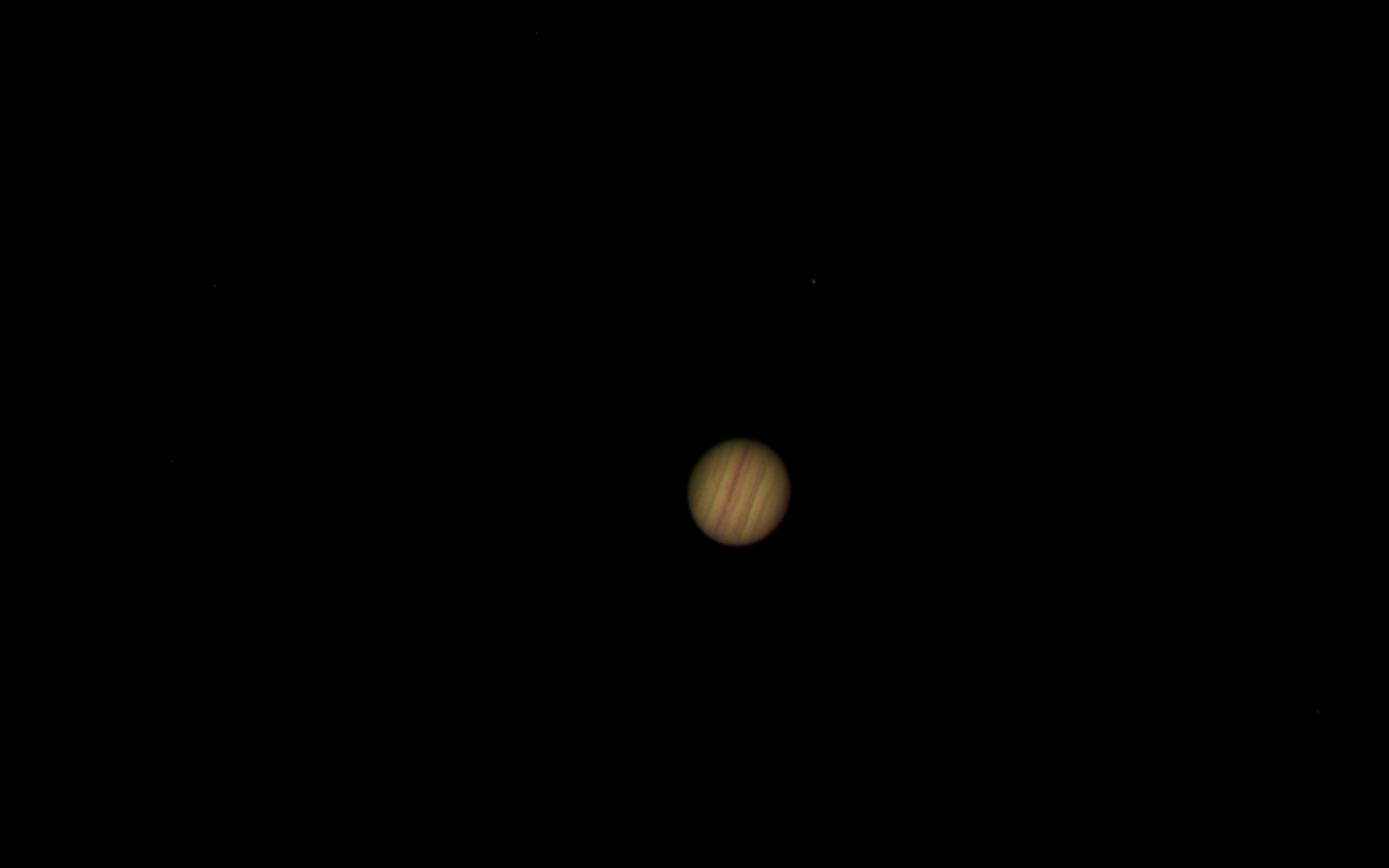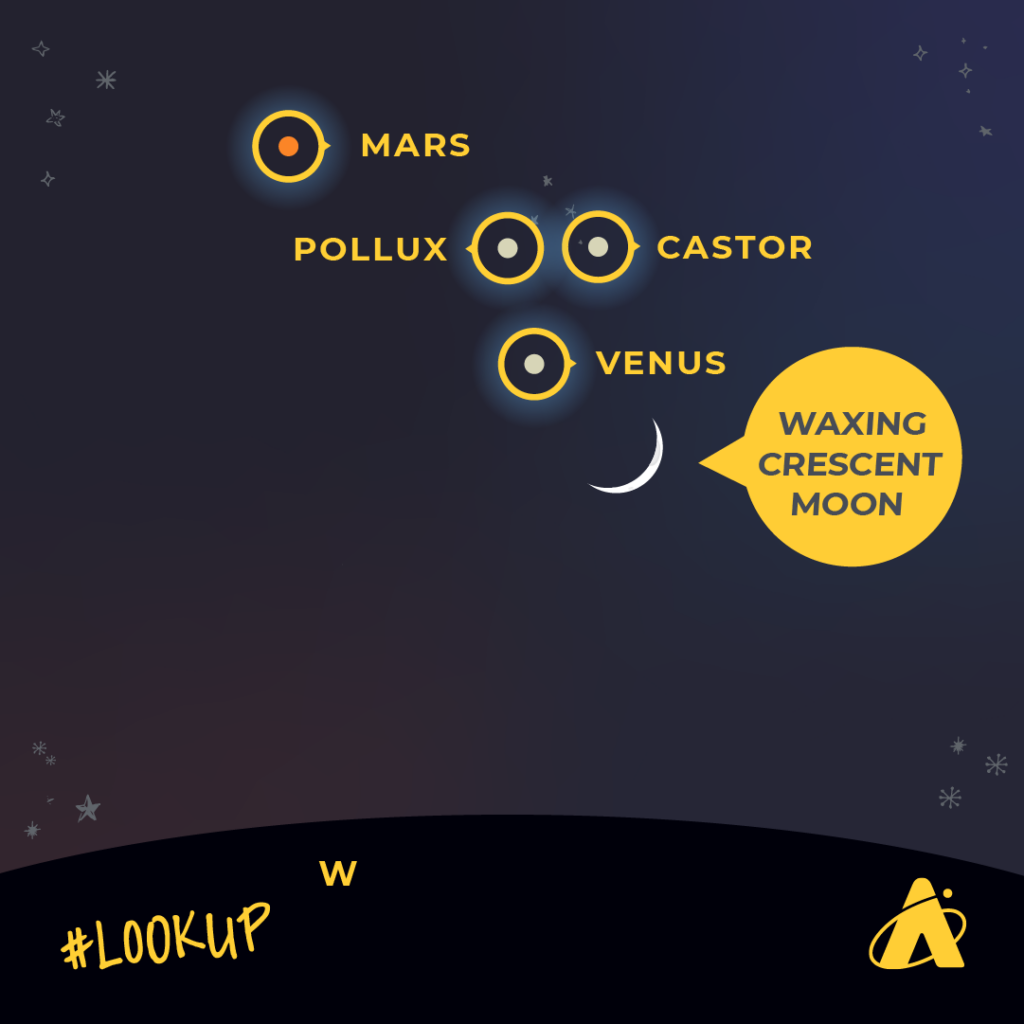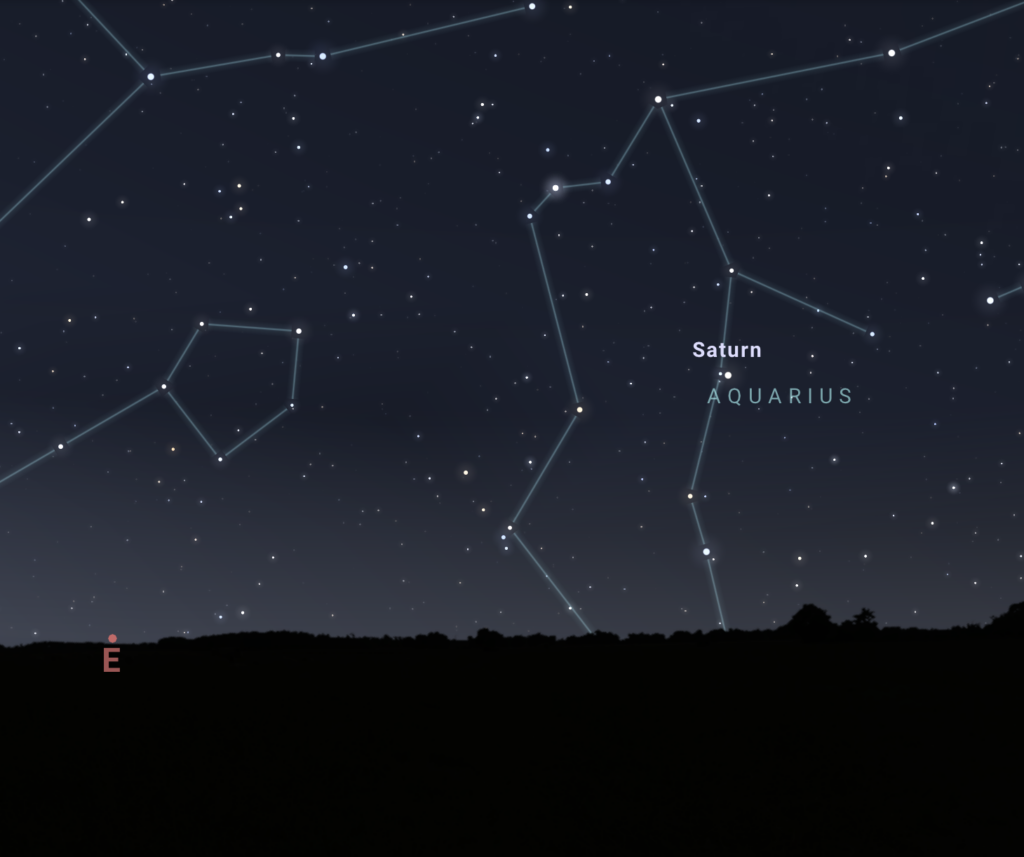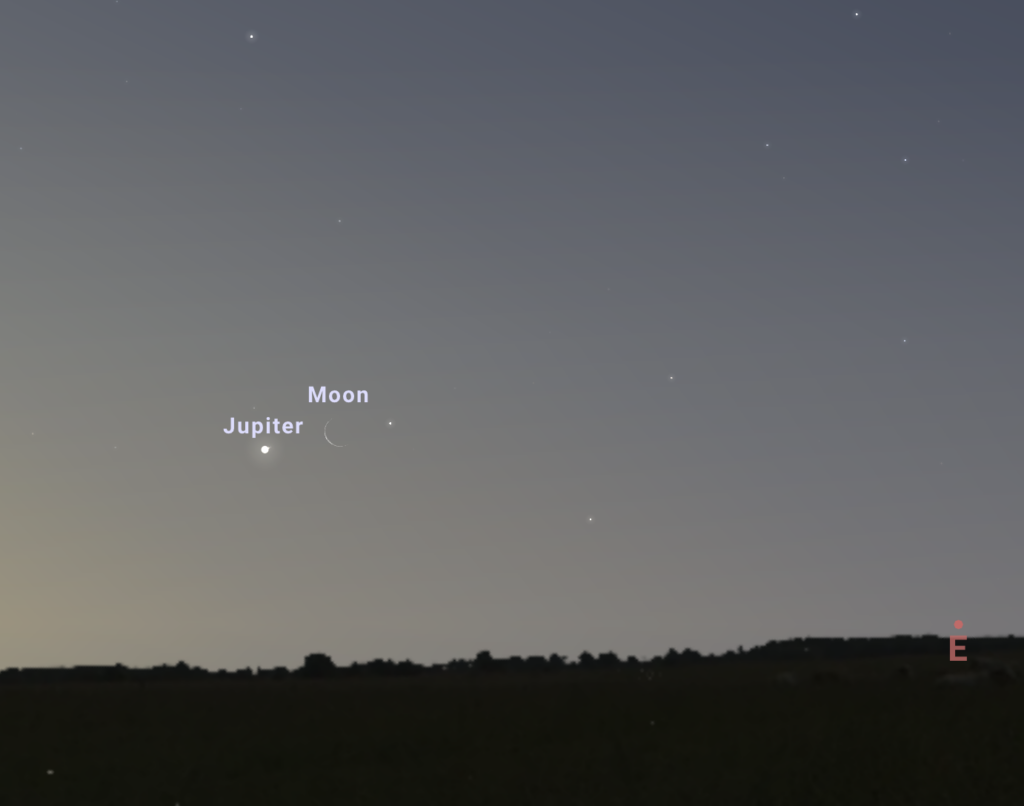Adler Skywatch: May 2023

Header Image: Jupiter in the night sky, as seen magnified by the telescope in the Adler Planetarium’s Doane Observatory.
We lose a full hour of dark-sky viewing this month, but there’s still plenty to look at in the night sky in May, 2023.
At the start of this month, there is about 14 hours between sunrise and sunset. By May 31, it will be 15 hours. This trend of longer days and shorter nights will continue until the summer solstice on June 21.
Venus and Mars Get Close
In the early evenings, look to the west-northwest sky to see Venus. At brighter than -4 magnitude, it’s unmistakably bright. Up and to the left of Venus, find the less-bright planet Mars, at only about +1.5 magnitude. There are stars brighter than Mars nearby this month, so you may want to use the planet’s distinct reddish color to help find it. Early in the month, Venus and Mars will appear about 25 degrees apart. However as each evening passes, they move closer together in the sky. By month’s end, they will appear only about 10 degrees apart.

The night of May 22, a slim waxing crescent Moon appears just below and to the right of Venus. The next night, May 23, the waxing crescent Moon floats between Venus and Mars, with the constellation Gemini’s famous twin stars, Pollux and Castor, just to the right of the Moon. On the night of May 24, the crescent Moon appears above Mars. In the Chicago area, Venus sets in the west-northwest after 11:00 pm and Mars sets soon after midnight.
Saturn Before Sunrise

Look for Saturn this month in the early morning darkness. It rises in the east at 3:30 am at the start of the month, and at 1:30 am by month’s end. The morning of May 15, it appears just above and to the left of a waning crescent Moon. Saturn is at about magnitude-one this month. So as dawn approaches and the morning sky gets brighter, Saturn fades away low in the southeast sky.
Jupiter Returns
After being too close to the Sun for safe viewing last month, the planet Jupiter makes an appearance in the pre-dawn sky, starting around May 15. It has a -2 magnitude and therefore is very bright. Try looking about 45 minutes before sunrise to see the gas giant. You won’t have much time to look for it, as Jupiter rises higher in the morning sky along with the Sun. As the sky gets brighter, the planet becomes more difficult to see.

On the morning of May 17, there’s a special treat: a conjunction of Jupiter and a waning crescent Moon, only two days before the new Moon. That morning, Jupiter will appear only a fraction of a degree from the Moon’s edge. The Sun rises in the Chicago area at 5:28 am that morning, and Jupiter rises at 4:23 am, so there’s not much time to look at the conjunction before Jupiter fades in the daylight.
Missing Mercury
This month, the planet Mercury will appear too faint and too close to the Sun to be readily visible.
Moon Phases

Full Moon: May 5
Last Quarter Moon: May 12
New Moon: May 19
First Quarter Moon: May 27
Please note: these descriptions are for the Chicago area, using Central time.
Subscribe To Skywatch Wednesday This May
Tour the night sky with the Adler Planetarium’s Theaters Manager, Nick, who uses cutting edge visualizations, NASA images, and astrophotography to show you what you can see in the night sky throughout the year.
Check out our latest episode for an astronomical tour of the 2023 spring night sky.
Learn From Our Astronomy Educators
Watch exclusive live episodes of Sky Observers Hangout this May! Learn how to observe upcoming cosmic happenings, enhance your astrophotography skills and see celestial objects through a telescope virtually with our astronomy educators. Check out Michelle and Hunter’s latest episode about the Venus and Jupiter Conjunction happening on March 1.







